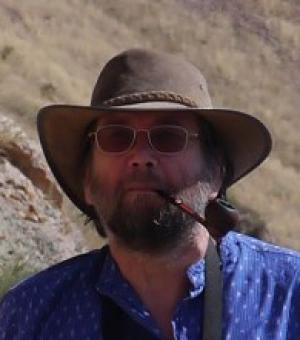Professor Mark Pollard
Research Interests
My research over the past 35 years has encompassed the application of the physical sciences, particularly chemistry, within archaeology, and has included a wide range of topics. It might be summarized under three main headings – the study of archaeological materials, the investigation of biogeochemical processes, and numerical applications in archaeology and palaeoclimatic reconstruction. Each of these has been supported by external research grants, postgraduate studentships, and publications.
Research Activities
I have had almost continuous external funding (mostly UK Research Council) since March 1986. The focus of my research has shifted over the period from a relatively straightforward analysis of archaeological materials to more complex questions of process, integration of various sources of information, and the development of numerical methodologies. There is a continuing need to further develop the theoretical underpinning of materials study in archaeology, including methods for the better integration of scientific provenance studies with existing archaeological understanding.
I am a Member of the Royal Society of Chemistry, a Fellow of the Society of Antiquaries and a Member of the Oriental Ceramic Society.
Current Research Projects
FLAME (FLow of Ancient Metal across Eurasia): European Research Council Advance Grant 1300505. 2.47MEuro, 1/10/2015-30/9/2020.
Completed Research Projects
- 'The Past People of Oxfordshire', funded by Higher Education Innovation Funding (HEIF) in partnership with Oxford Archaeology and Oxford City Council.
- Mass migration and apartheid in Anglo-Saxon Britain?: an ancient DNA re-evaluation
- Leverhulme Trust RPG-388 (Pollard/Hamerow/Bradley) 2 years from 1/1/12.
- BookNET: a network for the technological study of the book and manuscript as artefact
- AHRC AH/G015309/1 (Pollard, Ovendon, Howell and Neate) Science and Heritage Cluster, 9 months from Jan 2009.
- Transition to Ironworking in Ancient Cholcis
- National Geographic Global Exploration Fund GEFNE30-11 (Pollard) for 2012.
- Chemical structure and human behaviour: a new model for prehistoric metallurgy
- Leverhulme Trust F/08 622/D (Pollard, Gosden, Northover and Bray) 2 years from 1/01/11.
- Ancient Cholcis and the Origins of Iron: Field investigations of the earliest iron working in western Georgia
- British Academy SG100285 (Albert Reckitt Archaeology Fund) (Pollard, Gilmour and Johnson) £7,500 from August 2010.
- Below the Salt: A study of the human remains and associated material from the salt mine at Chehrabad, Zanjan, Iran
- AHRC AH/HO10998/1 (Pollard and Brothwell, University of York) 1/4/2010 for 2 years.
- Evaluating Hunter-Gatherer Subsistence Strategies in Late-Glacial Central Italy
- Leverhulme Trust F/00 235/1 (Donahue (University of Bradford), Lee-Thorp, Blockley (RHUL), Pollard and Pellegrini) 3 years from June 2009.
Links
FLAME (The FLow of Ancient Metals across Eurasia)
RESET — Response of Humans to Abrupt Environmental Transitions
Postgraduate teaching
Lectururer for MSc in Archaeological Science




